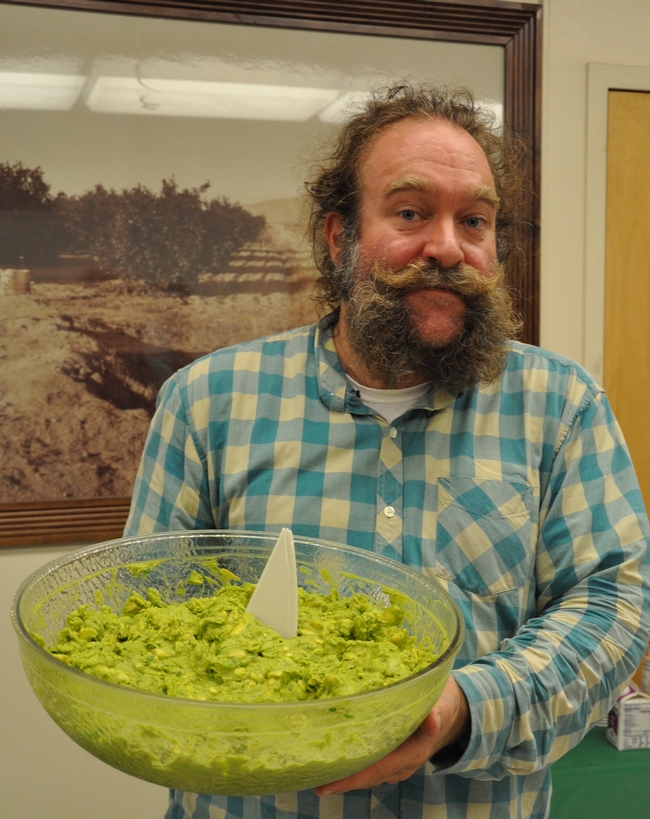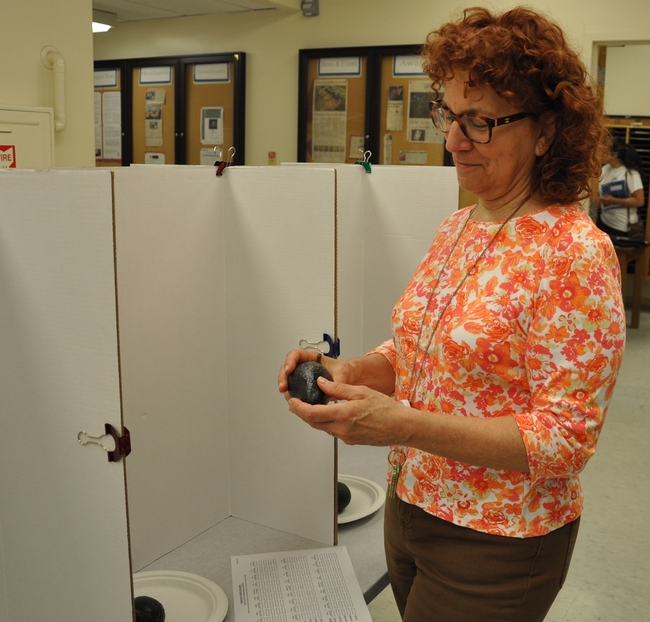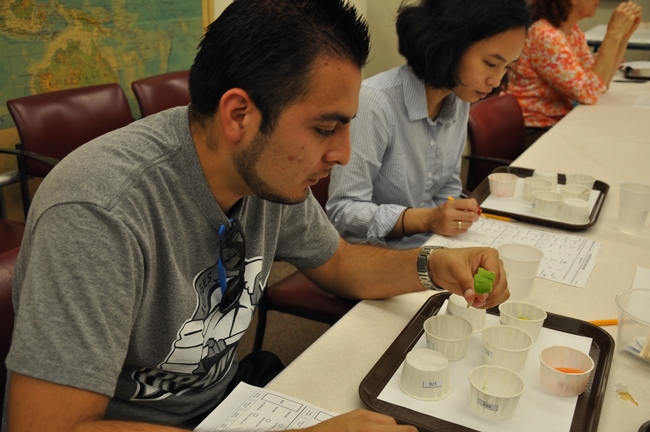
Eric Focht, a staff research associate in the Arpaia lab, helps organize the tastings; the guacamole he prepares specially for the occasion serves as an additional attraction. Focht has been working on avocados since 1999, the year he joined UCR as a staff member. His relationship with the campus, however, began before then; his father, now retired, was a professor on campus.
Typically, participants of the avocado tastings sample six avocados which come from UC ANR's South Coast Research and Extension Center in Irvine. “Hass control fruit are purchased from or donated by a packing house,” Focht says.
First, participants do a visual assessment of the fruit, evaluating texture, size and color. Next they step into a room where they do the blind tastings.
“The data is compiled and used to assess, among other things, which of our new breeding selections shows promise and should be pushed for eventual release,” says Focht, whose duties include coordinating field activities, designing field layouts, generating maps and databases, selecting avocado varieties of interest, interacting with growers and the public, troubleshooting, and directing the day-to-day operations of the lab when Arpaia is away.

“Right now our 465518-99 has been performing very well,” he says, “but in former years, its peak season is February through April. In the fall, Reed is always a good fruit with good flavor and texture. I prefer a fruit that peels easily and has good flavor. If it doesn't peel clean from the skin, I tend to overlook it for something else with good flavor and convenient packaging.”
The avocado growing season varies from variety to variety. By planting out several varieties, it is possible to have avocados year round in one's garden. Focht explains that the growing season varies regionally as well.
“The season in San Luis Obispo is months later than it is in San Diego,” he says.
Most avocado acreage in California is currently in Northern San Diego County. Most avocado acreage in the U.S. is in California. Other states with avocado industries include Florida and Texas. Worldwide, avocados are grown in Mexico, Chile, Peru, Israel, Australia, South Africa and New Zealand.

“An acre of avocado trees typically requires 2.5-4 acre-feet of water per year depending on weather and other factors,” he says. “The drought is resulting in lost acreage as farmers can either not afford or not find enough water for their trees. Successful farmers are having to modify their cultural practices to stay competitive.”
The next avocado tasting at UCR will be Aug. 12, 2015. For more information about the tastings, contact Focht.